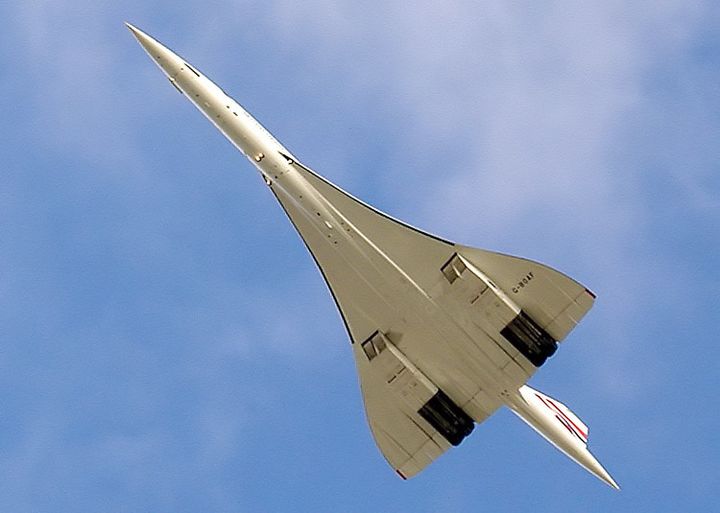
If humans (as a species) love to fly, we also love to fly faster. Let's forget for a minute about the airport lineups and security that most of us have to face, and instead think about the very act of flight itself -- that fun of reaching through the clouds and seeing tiny things below.
For an example of that love, we need look no further than Chuck Yeager. In 1947, he broke the sound barrier (went faster than the speed of sound) inside of Glamorous Glennis. He continued setting speed records for years afterwards. Even in 2012, at age 89, Yeager flew backseat on an F-15D that was commemorating his historic flight.
But for those outside the military, supersonic flight is usually out of reach. There was a time when the Concorde offered it to high-paying customers, but a fatal accident contributed to grounding the tiny fleet forever. But other companies such as Airbus -- which recently had a patent accepted -- are thinking about going supersonic again.
If the plane takes off, it could move between London in New York in just an hour, at an altitude about 20 kilometers higher than a typical jet. It has a projected capacity of 20 people. The patent makes a nod to design changes to previous supersonic aircraft (Concorde and Tupolev Tu-144), such as a sleeker look to reduce the noise of breaking the barrier.
"The applications envisaged by the ultra-rapid air vehicle are of two kinds, namely civil and military," Airbus wrote in the patent.
"In the case of civil applications, the market envisaged is principally that of business travel and VIP passengers, who require transcontinental return journeys within one day. The military applications ... relate, for example, to strategic reconnaissance, ultra-rapid transport of high added-value goods, and also equipped elite commandos."
Does the market exist for such an elite market? We'd all love to beat the lineup at the airport, but tempting as it is to cruise at 4.5 times the speed of sound, the cost may be too prohibitive to actually get the airplane off the ground. Still, the applications may bleed into other areas (such as better drones.)
How can we best improve the experience of air travel? Let us know by launching a HeroX challenge.
Top image: A Concorde airplane. Credit: Wikimedia Commons








